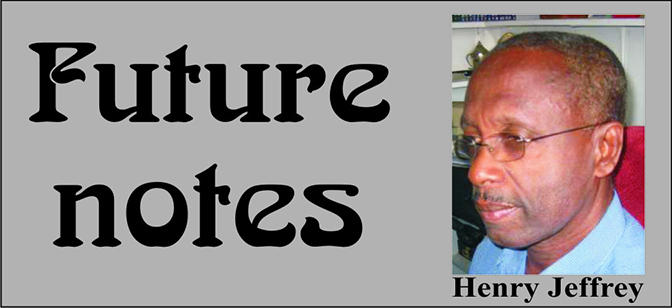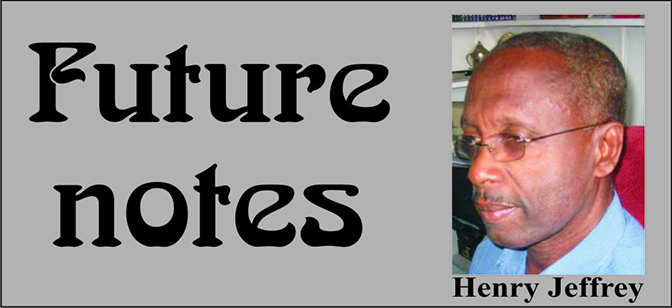In ‘Under the PPP/C Guyana had the fastest growing economy in the region’ (SN: 22/05/2017), former president Donald Ramotar presented some isolated truths, but the story he wove around them was essentially false. Mr. Ramotar speaks to an important constituency which his highly distorted narrative could prevent from coming to grips with the gravamen of our situation, and this could adversely affect attempts to find an equitable formula for our living together in peace and prosperity.
He began by telling us that our civil and political liberties are under threat (his concerns will be dealt with at another time) but then set about focusing our attention upon the economy, and here he made a general comment that some would say better described the growth and investment environments the PPP/C inherited from the PNC in 1992. He claimed that from 2006 to 2014 under the PPP/C ‘Guyana was a country on the rise. … we had the fastest growing economy in the region. Indeed, we had become a beacon of hope for the Caribbean. From 2006-14 … was the longest period of uninterrupted growth in the history of independent Guyana. The average growth rate was 4.5% per annum.’
There is not disagreement that under the PNC by the late 1980s the economy was in a disastrous state, but if the 
The World Bank 2003 review tells the sorry tale of Guyana’s decline. ‘From 1992 to 1994, private investment soared to more than 30 percent of GDP, reflecting mainly the sale of state enterprises to the private sector. Since 1998, private investment has declined steadily from 13.4 percent of GDP in 1998 to 7.4 percent of GDP in 2002. Since replacement investment would normally require 4 to 5 percent of GDP, this implies that very little new private capital accumulation has taken place since 1998.’ Indeed, as late as 1997, the IMF stated that ‘Average real GDP growth rate is projected at about 6 percent a year in 1997-2000 and about 4.5 percent a year thereafter’ but, as it turned out, average annual GDP growth was .4% from 1998 to 2005. This was certainly not ‘a demonstration of the good financial management by the PPP/C and the dynamic growth of the economy’ of which Mr. Ramotar spoke. Indeed, the PNC could fairly argue that it was the failure of the PPP/C government to maintain the level of investment that Desmond Hoyte’s reforms engendered that led to economic stagnation.
Unsurprisingly, the former president has an excuse for this decline, and we will deal with this in another column. He wants us to brush aside these eight years and begin again in 2006, boasting that ‘In 2014, the last full year of the PPP/C in office, Guyana’s GDP was US$3.1 billion. That was up from US$1.4 billion in 2006, an increase of 121.4%. He did not say that the economy was rebased from 2006 and with the wave of this magic wand it grew by some 75%: our GDP which was US$825m in 2005, automatically rose to US$1,458m in 2006! This aside, surely this is nothing to write home about for in only 7 years from 1991 to 1997 Guyana’s economy did marginally better: moving from US$336.7 to US$749.1 a 122% increase!
The numbers dealing with commercial bank assets, private sector vibrancy and loans and investments, etc. provided by Mr. Ramotar are reflected in the national economic investments and growth mentioned above. But Mr. Ramotar made another distorted claim that the PPP propagandists have already so lodged in the public mind that it should not go unchallenged. He claimed that ‘The PPP/C administration had drastically reduced the huge debt it had inherited from a previous PNC regime. The PPP/C reduced the external debt to just 39.5% of GDP. What a turnaround!’ What this statement fails to transmit is that the PPP/C came to government and met a structured arrangement for dealing with Guyana’s debt.
Firstly, Guyana’s 1988 economic recovery programme (ERP) agreed with the international financial agencies committed the latter to providing Guyana with debt relief. It states ‘Guyana’s continued development also depends heavily on continued access to concessionary external finance, as well as concessionary debt relief’ and the World Bank 1992 country paper projected that if its recommendations for debt relief were accepted ‘The total debt service ratio, which is projected to be 41% of exports in 1992 …. would fall further to 21% by 1998’! Secondly, the 1992 World Bank report drew our attention to the fact that ‘Dealing with the problem of the debt has occupied a major segment of the (Hoyte’s) Government’s attention (and) Guyana has received two reschedulings from the Paris Club, the latest in September 1990 on Toronto terms. However … the effect has been mostly to postpone payments, rather than to reduce substantially debt service.’
When the PPP/C came to office in 1992 it met substantial economic growth, committed investments and a structured programme for dealing with Guyana’s debt, but what it did not inherit was an appropriate political management structure. Over the years it has been our incapacity to manage consensually that has severely impaired our development and from 1992 to 2005 we again paid a steep price with years of labour, political, criminal and economic disturbances. However, by around 2005 the PPP/C had succeeded in establishing a sufficient level of political dominance to gain some reprieve. This was a deliberate policy choice; the political environment became suppressive but the economy sputtered along. But political dominance could not solve the underlying governance problem, which soon returned, and Mr. Ramotar entreated us to ‘not forget too that the last three years of the PPP/C government were even more difficult.’ This ruin is ‘Donald’s truth’; what the former president wants to sell us as the halcyon days of Guyana’s growth and development!






